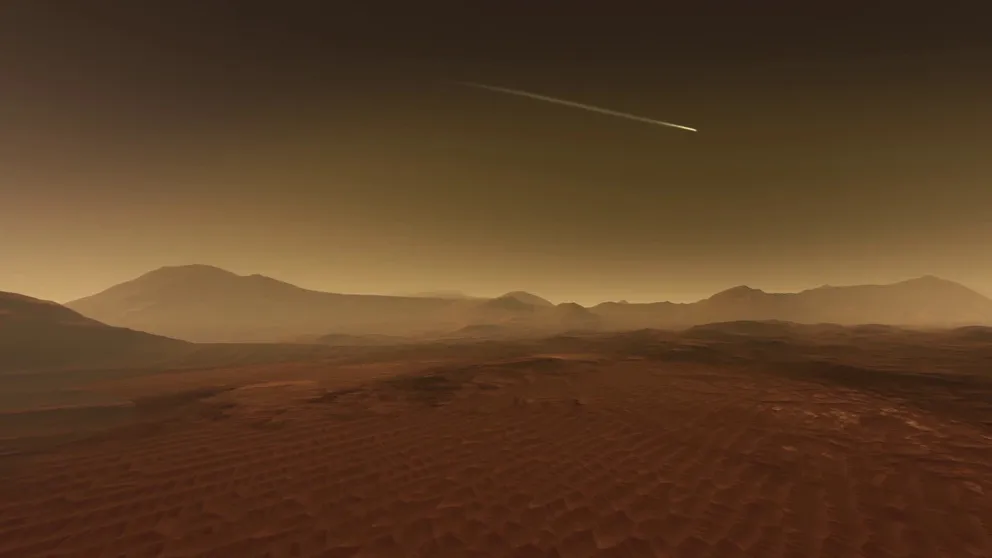One year later: No life found yet, but Perseverance has racked up accomplishments
The rover’s goal is to seek signs of life and collect rock samples for a possible return to earth.
NASA's exploration of Mars
NASA animation of Perseverance's mission on the Red Planet.
The Martian environment would make it impossible to burn anniversary candles on the Red Planet, but that’s not stopping NASA from celebrating one year of Perseverance’s explorations.
The space agency’s $2.2-billion rover landed on Mars on February 18, 2021, and has made remarkable discoveries ever since.
The six-wheeled machine has collected rock samples, served as a base for the first helicopter on Mars and conducted other experiments.
Many of the events have been beamed back to Earth where space enthusiasts have been treated to sights and sounds never experienced before.
The rover is collecting samples from the Jezero Crater, which NASA says likely contained a lake billions of years ago.
Scientists say there is still plenty of work for Perseverance to do, including continuing on its key objective of searching for signs of life.
Glowing successes
The rover Perseverance and its helicopter counterpart Ingenuity have made history with literally every turn.
Scientists have been busy with historical explorations, from driving the most miles on the Martian planet to conducting 19 successful flights.
"It’s been a year of Perseverance. From operating during COVID-19, to the challenges we experienced with sampling, to interpreting the scientific results, it’s such an appropriate name for the vehicle – but also for the team and the mission itself," Jessica Samuels, Perseverance surface operations mission manager, said during a recent mission briefing.
During its first year on the planet, NASA said the rover collected six samples of rocks, took more than 100,000 images and has sent back troves of data.
Not to be outdone, Ingenuity has had similar remarkable feats.
The first-of-its type helicopter, which was slated only to fly five times, has had 19 successful missions, taking photos and video every step of the way.
After examining the Jezero Crater, the duo is slated to head back near where they landed on the planet to examine what experts believe is a lake bottom bed to search for signs of previous life.
Mission has had its challenges
Despite the mission’s glowing successes, there have been a handful of times in which scientists have been at the mercy of technology and the impacts of being millions of miles away.
During the Perseverance’s first attempt to sample rocks in August, the rover unexpectedly came up empty-handed.
NASA described the moment as an "emotional rollercoaster" for scientists.
The agency believes the first rock was simply too powdery to collect.
Sentiments from Mars were again the problem in December.
NASA reported pebbles from a sampling process became lodged in a carousel, blocking a drill bit from operating properly for weeks.
7 STELLAR ACHIEVEMENTS IN SPACEFLIGHT FROM 2021 WORTH CELEBRATING
Even the weather has played havoc with the mission, causing the first-ever flight delay on the planet.
A sizable dust storm grounded NASA’s Ingenuity Mars helicopter in January.
NASA admitted they were surprised by how early the storm formed in the season but said their weather forecasters had their eyes on the potential disruptive weather.
Questions remain about mission’s future
NASA estimated that Perseverance’s mission on Mars would last for around 687 days.
Scientists hope that the rover will collect at least 20 samples from the Martian surface by the mission’s conclusion.
The pieces of rock and soil will remain in tubes that are hermetically sealed until they are dropped off at a location that can be easily accessed by a future mission.
The agency said the ultimate goal is to get those samples back to Earth, but how exactly it plans to do so is still in the proposal phase.
NASA says they are working closely with their counterparts at the European Space Agency to come up with a retrieval plan.

Rendering of what a sample retrieval could look like
(NASA/JPL-Caltech/ASU/MSSS)
Any future mission would likely cost billions of dollars, and it wouldn’t be a quick turnaround.
Scientists envision launching a new lander from Earth in 2026 and reaching Mars in 2028.
LOOK FORWARD TO THESE 2022 MILESTONES IN SPACE EXPLORATION
The samples collected by Perseverance would be loaded onto the rocket and sent back to Earth, with a potential landing around 2031.
If the mission is successful, history would be made again, with the rocket becoming the first ever to launch from another planet and return to Earth.
NASA says if they are successful in getting the samples into labs the sediments would be examined by scientists for signs of past life on Mars and as well as be part of other studies.
